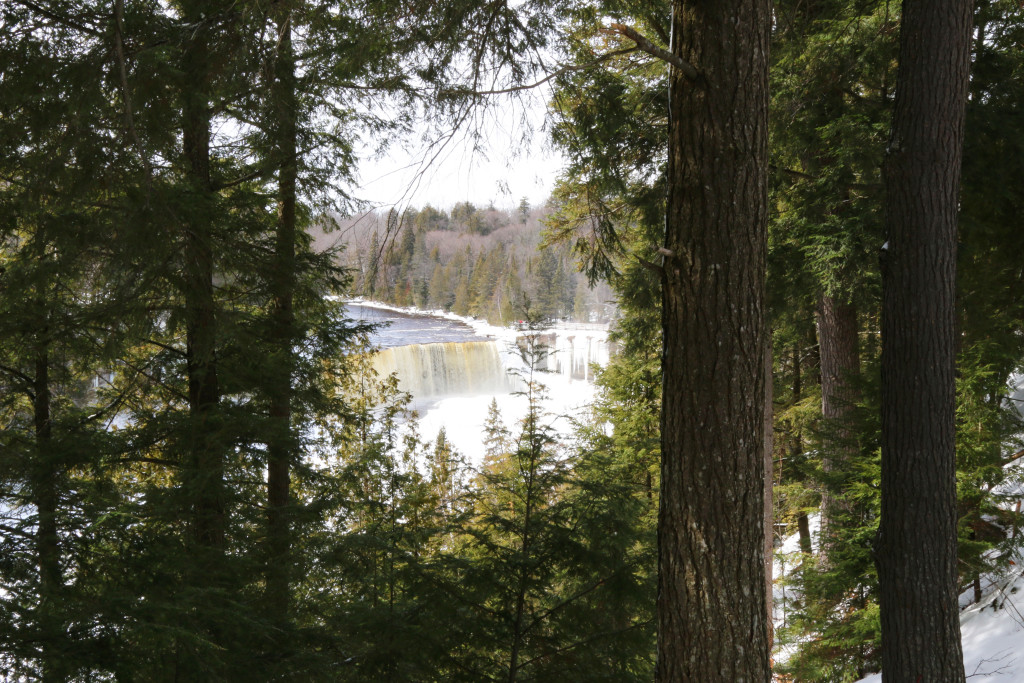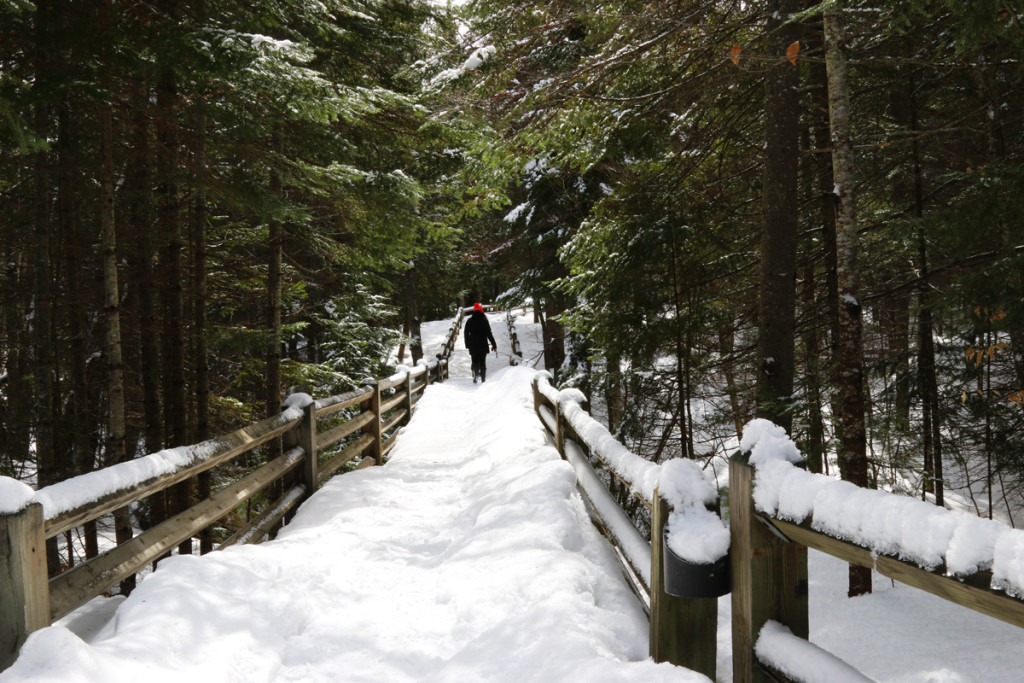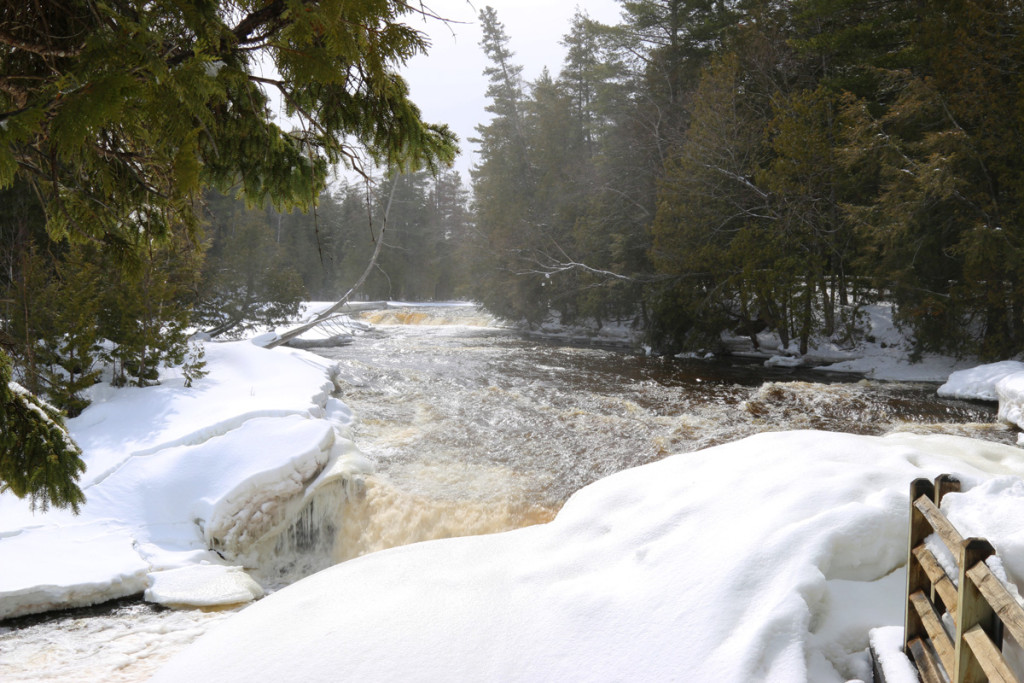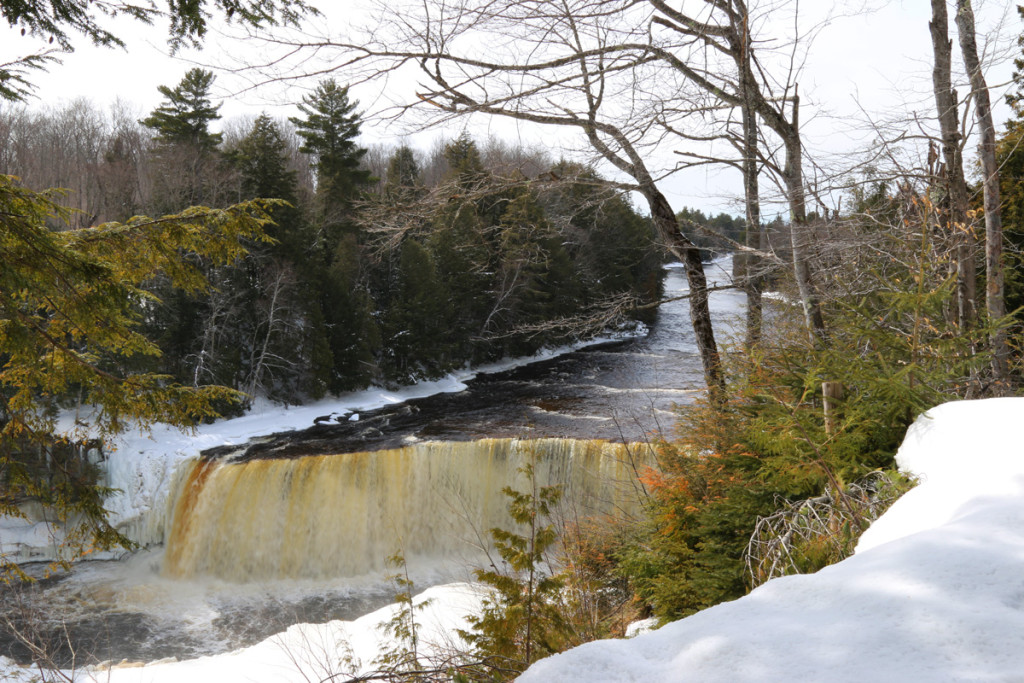Our first destination on the cross country roadtrip was Tahquamenon Falls in Michigan’s Upper Peninsula.
We’d left Traverse City early on Tuesday morning. After a quick stop in Petoskey to get some coffee and wifi from North Perk, we continued north to the Mackinac Bridge.
I’d never even seen the Mackinac Bridge before and was looking forward to it. The impressive bridge spans more than 1.5 miles across the Straits of Mackinac, making it the 16th longest suspension bridge in the world, and essentially separates lakes Michigan and Huron.

Bidding farewell to Michigan’s lower peninsula, we crossed the Straits of Mackinac via the Mackinac Bridge.
Once across the bridge we continued north to Tahquamenon Falls State Park.
Tahquamenon Falls actually consist of two separate waterfalls: the Lower Falls and the Upper Falls. Our first stop was the Lower Falls which can be reached by a short hike from Lower Falls Campground. While the part of the campground remains open during the winter, the campsites closest to the river are down a seasonal road and vehicular access is blocked by a locked gate.
Not that it would have made much difference if the gate had been unlocked. The amount of snow still lying on the ground would have denied access to anything but a snowmobile or snowcat.
I thought Traverse City got a lot of snow in the winter, but when we had left town that morning, snow remained only in the shadiest of patches. There was 3 to 4 feet of snow on the road at Tahquamenon Falls!

Remi the Vizsla provides a little scale to the size of the snowbanks lining the campground’s main road.
About halfway down the road a trail led off through the woods towards the lower falls. Taking the trail required climbing up onto the snowbank – a challenge in itself! – and then following a well-tracked path through the forest.
The Lower Falls are quite impressive. They’re not especially high, some could almost be classified as large rapids, but the five separate falls surrounding a small island create a wonderfully picturesque scene. Visiting in early spring, as we were, the falls were both swollen by spring melt and still choked with considerable ice.
The 3 feet of snow on the trail and platforms made viewing a little precarious. Obviously railings had been installed to prevent people falling in, but with 2-3 feet of snow packed on the platform, the railings were below knee-height and represented a tripping threat more than a safety feature.
One of the distinguishing features of the Tahquamenon River is its rusty brown color. This is caused due to the waters that feed the river draining through cedar swamps. The tannins in the wood stain the water and also affect its nutrient levels.
After hiking back out from the Lower Falls, we headed over to Tahquamenon Falls’ Upper Falls. These are much more directly accessible from the road and are just a short drive away from the Lower Falls.
Several short hiking trails lead you to different overlooks with great views of the Upper Falls.
All in all, our stop at Tahquamenon Falls was a great way to break up our drive from Traverse City to Pictured Rocks National Lakeshore. Some great hikes and awesome views over the largest waterfalls in Michigan made the stop very worthwhile.




